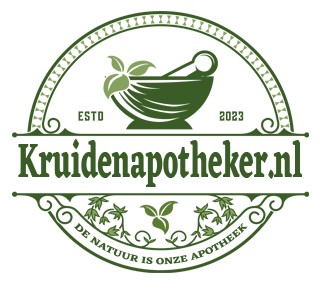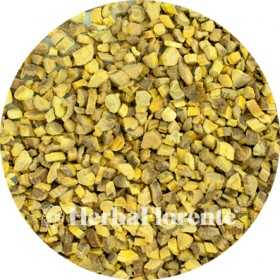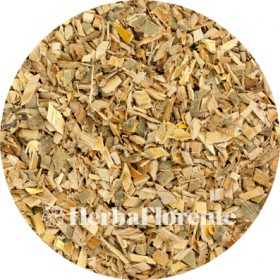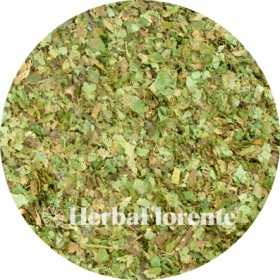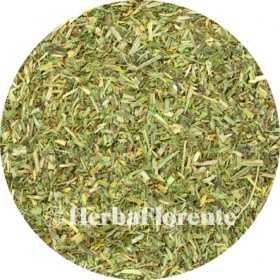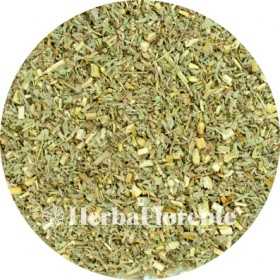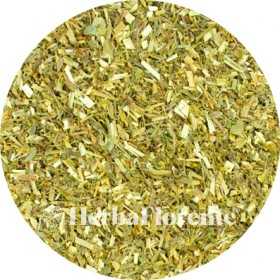A, B, C, .... X, Y, Z
There are 102 products.
Willow - Salicis alba
The willow (Salix alba), also known as 'white willow' in English, naturally contains the bioactive substance salicin. This tree is common in the Netherlands. In 1828, the German pharmacist Johann Andreas Buchner discovered that the bark of the willow tree contains high concentrations of the glycoside salicin. This substance is beneficial for maintaining flexible joints and muscle health.
€1.95
From: €1.95
Witch Hazel (Leaf) - Hamamelis virginiana
The American witch hazel (Hamamelis virginiana) is a shrub belonging to the family Hamamelidaceae, native to North America from Nova Scotia to Minnesota, and from southern and central Florida to eastern Texas.
The shrub can reach a height of 6 to sometimes even 10 meters, with a bushy growth thanks to the many branches that arise just above the ground. The bark is light brown, smooth but somewhat flaky, and shows a reddish-purple color on the inside.
Blooming from September through October, the flowers of the American witch hazel display clusters of 4 stamens. They usually range from pale yellow to bright yellow, although orange or red hues also occur. The petals are ribbon-shaped and measure 10-20 mm in length.
The shrub can reach a height of 6 to sometimes even 10 meters, with a bushy growth thanks to the many branches that arise just above the ground. The bark is light brown, smooth but somewhat flaky, and shows a reddish-purple color on the inside.
Blooming from September through October, the flowers of the American witch hazel display clusters of 4 stamens. They usually range from pale yellow to bright yellow, although orange or red hues also occur. The petals are ribbon-shaped and measure 10-20 mm in length.
€5.00
From: €5.00
Woddruff Sweet - Galium aparine
Woddruff Sweet (Galium aparine) belongs to the star-leaved family (Rubiaceae). This plant is known for its ability to cling to objects it comes into contact with, thanks to the numerous hooks on both the stem and fruits. This causes plants and fruits to get caught in the fur of animals, resulting in widespread dispersal over great distances.
Cleaver leaves are widest above the middle and have one central vein. They grow together in whorls of seven. These leaves also have hooks, albeit less than the rest of the plant. The stem is thickened at the tips.
Cleaver leaves are widest above the middle and have one central vein. They grow together in whorls of seven. These leaves also have hooks, albeit less than the rest of the plant. The stem is thickened at the tips.
€3.95
From: €3.95
Wormwood Herb - Artemisia absinthium - Cut
Absinthe wormwood (Artemisia absinthium) is a plant from the composite family (Asteraceae). This species is on the Dutch Red List of plants as quite rare and moderately reduced in numbers. It is a perennial plant that grows naturally on dry, calcareous, nitrogen-rich and cultivated soils in temperate regions of Europe, Asia and North Africa. The genus name Artemisia is derived from the Greek hunting goddess Artemis.
The buds of wormwood absinthe are traditionally seen as medicinal. The bitter extract of these buds is an important ingredient in drinks such as vermouth and classic absinthe. The most important flavorings are absinthine and the menthol-smelling terpene thujone.
The buds of wormwood absinthe are traditionally seen as medicinal. The bitter extract of these buds is an important ingredient in drinks such as vermouth and classic absinthe. The most important flavorings are absinthine and the menthol-smelling terpene thujone.
€1.50
From: €1.50
Yarrow - Achillea millefolii
Yarrow (Achillea millefolium) is an herb that belongs to the daisy family (Asteraceae). It is a winter-hardy, perennial plant that is common in the Netherlands. It has finely divided, feathery leaves and small white flowers that tend toward pink. The use of this herb has been around for centuries. Yarrow is used, among other things, to support digestion and promote fat metabolism. The herb is beneficial for the blood vessels, urinary tract and respiratory tract. It helps with normal menstruation.
€1.95
From: €1.95
Yellow Sweet Slover - Melilotus officinalis
The Yellow Sweet Slover (Melilotus officinalis) is a biennial or perennial plant from the legume family (Leguminosae). Originally from Southern Europe, this plant has now spread worldwide. It is a slender, hairless plant that is frequently found along roads and on arable land, and is also found in dune areas. The lemon yellow honey clover reaches a height of 30 to 150 cm and blooms from July to October.
€1.95
From: €1.95
